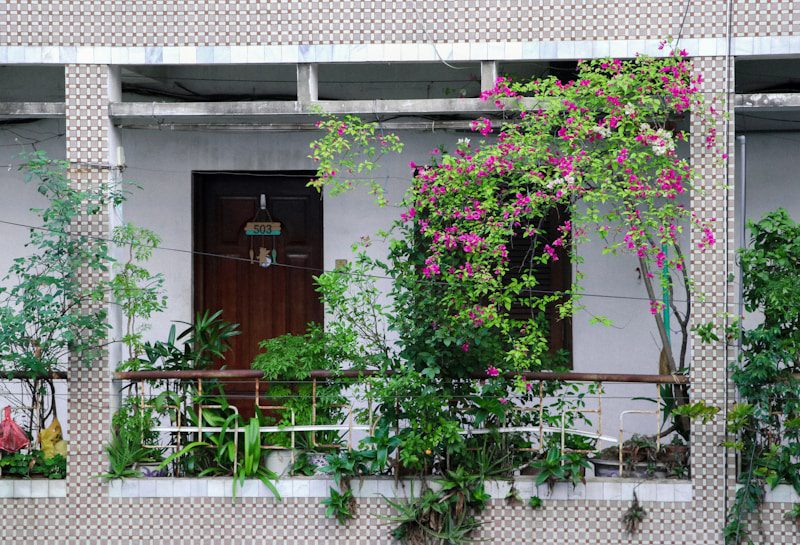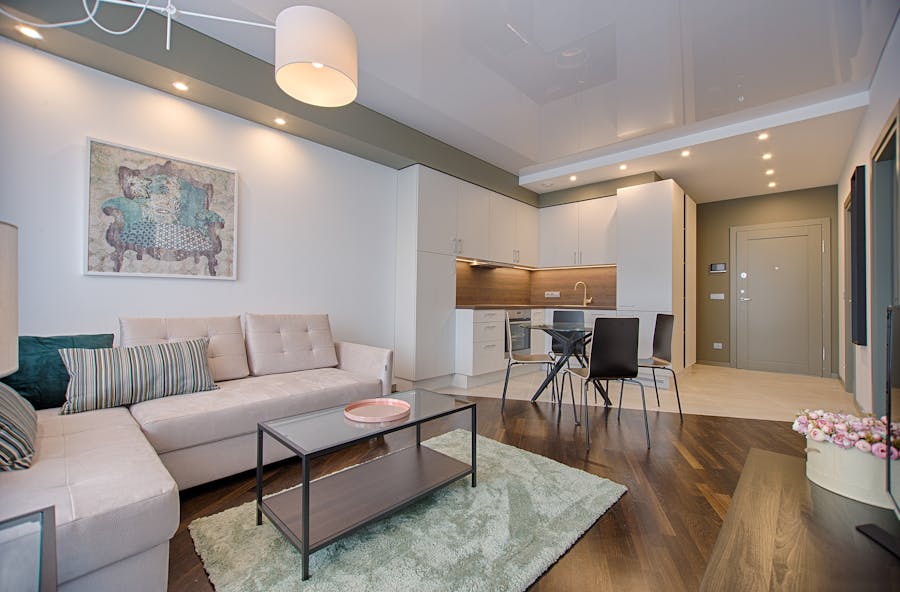Living in a city often means sacrificing green space, but with a little creativity and some budget-friendly solutions, you can transform even the smallest balcony into a lush, thriving garden. A DIY balcony garden is not only an excellent way to connect with nature but also a perfect way to improve your home’s aesthetics and create a calming retreat.
Creating a balcony garden doesn’t have to be expensive or complicated. With some strategic planning, a few recycled materials, and the right plants, you can design your own green space without breaking the bank. This guide will walk you through the steps to create an easy, budget-friendly DIY balcony garden.
Step 1: Assess Your Balcony Space and Conditions
Before buying plants or pots, it’s important to evaluate your balcony space to determine how much sunlight it receives, its size, and the type of plants that will thrive in your environment.
1. Space
Measure your balcony to understand how much room you have for containers, furniture, and accessories. Even small balconies can accommodate a vertical garden or hanging planters, so don’t worry if your space is limited.
2. Sunlight
Observe the amount of sunlight your balcony gets during the day:
- Full Sun (6+ hours of direct sunlight): Great for sun-loving plants like tomatoes, peppers, and succulents.
- Partial Sun/Partial Shade (3-6 hours): Perfect for herbs, lettuces, and shade-tolerant flowers like impatiens.
- Full Shade (Less than 3 hours): Ideal for plants like ferns, ivy, and begonias.
Understanding your sunlight conditions will help you choose the right plants and avoid unnecessary expenses on greenery that won’t thrive.
3. Weight Limit
If you live in an apartment or condo, check if there are weight restrictions for balconies. Plants, pots, and soil can add up in weight, so be mindful of any limits set by your building to avoid overloading the structure.
Step 2: Choose Budget-Friendly Containers
You don’t need to splurge on expensive pots or planters to create a beautiful garden. There are plenty of affordable options, and you can even repurpose items from around your home.
1. Upcycle Old Containers
Get creative by using items you already own:
- Old buckets or tins: Just drill drainage holes in the bottom.
- Wooden crates: Line them with landscape fabric to hold soil.
- Plastic bottles: Cut off the top, make drainage holes, and plant herbs or small flowers.
- Cans: Reuse metal food cans as quirky plant holders for succulents or herbs.
2. Thrift Stores and Flea Markets
Local thrift shops often have old pots or containers that can be reused in your balcony garden. Look for unique items like baskets or ceramic pots that add character without costing much.
3. DIY Planters
If you enjoy a bit of DIY, consider building your own planter boxes using reclaimed wood or pallets. You can also use cinder blocks or old drawers to create tiered plant stands. These can be stacked creatively to save space and money.
Step 3: Choose the Right Plants for Your Balcony
When creating a garden on a budget, it’s best to start small and expand over time. Choose easy-to-care-for plants that suit your environment and space constraints.
1. Low-Maintenance Plants
For beginners or those with limited time, consider plants that require minimal care. Some low-maintenance options include:
- Herbs: Basil, mint, rosemary, and thyme are easy to grow and great for cooking.
- Succulents and Cacti: These plants thrive with little water and sunlight, making them perfect for sunny balconies.
- Hardy Flowers: Marigolds, petunias, and pansies can withstand varying weather conditions and require little maintenance.
2. Grow Edible Plants
Growing your own vegetables and herbs is one of the most rewarding aspects of a balcony garden. You can start small with herbs and leafy greens, or if you have more space, grow compact varieties of vegetables like cherry tomatoes, peppers, or beans. Edible plants can save you money on groceries while providing fresh, organic produce right at your doorstep.
3. Use Seeds Instead of Plants
Instead of buying expensive nursery plants, grow your plants from seeds. Seeds are affordable, and you can plant more for the same cost as a few established plants. Some easy-to-grow seeds include lettuce, spinach, radishes, and sunflowers.
Step 4: Maximize Space with Vertical Gardening
When space is limited, think vertically. Vertical gardening allows you to grow more plants without crowding your balcony floor. It also adds visual interest and can create a privacy screen from neighboring balconies.
1. Hanging Planters
Use hanging baskets or containers suspended from the ceiling or railings to free up floor space. You can grow trailing plants like ivy or creeping thyme, or herbs like mint that thrive in hanging planters.
2. Wall-Mounted Shelves
Install simple wall-mounted shelves to hold small pots or planters. You can make these yourself using wood planks and brackets or purchase inexpensive shelving from home improvement stores.
3. Repurposed Pallets
Old wooden pallets make excellent vertical garden walls. Attach small pots to the slats or create pockets with fabric to plant herbs, flowers, or vegetables. Pallet gardens can be leaned against a wall or railing, instantly adding greenery without taking up much room.
Step 5: Use Affordable Soil and Fertilizers
The foundation of any successful garden is healthy soil, but premium soil mixes can be pricey. Luckily, there are budget-friendly ways to create nutrient-rich soil for your plants.
1. Create Your Own Potting Mix
Instead of buying pre-made potting soil, make your own mix using a combination of garden soil, compost, and a bit of sand or perlite to improve drainage. You can even use coffee grounds, banana peels, or eggshells as natural fertilizers to give your plants a boost.
2. Use Compost
Start composting kitchen scraps to create your own organic fertilizer. Vegetable peels, fruit scraps, eggshells, and coffee grounds all break down into rich, nutrient-dense compost that can be mixed into your potting soil. You don’t need a large compost bin – a small container on your balcony will work perfectly for this purpose.
3. Seek Free or Discounted Soil
Check with local gardening clubs or community gardens for free compost or discounted soil. Sometimes, municipalities offer free compost as part of waste management programs.
Step 6: Incorporate Budget-Friendly Decorations
Your balcony garden should feel like a cozy retreat. You can decorate it without spending a fortune by using DIY projects and thrifted items to add personality and charm.
1. String Lights
Add ambiance to your balcony by hanging inexpensive string lights or fairy lights. They create a warm, inviting glow and can be found at most dollar stores or home goods shops.
2. DIY Plant Markers
Create plant markers using small rocks, wooden spoons, or old popsicle sticks. Label your herbs and flowers with these easy DIY markers, which can add a fun and personal touch to your garden.
3. Upcycled Garden Furniture
If you want to add seating to your garden, search for budget-friendly options like thrifted chairs or benches. You can even make your own seating using wooden crates or pallets, topped with cushions for comfort.
Step 7: Maintenance Tips on a Budget
Maintaining your balcony garden doesn’t have to be costly or time-consuming. With a few smart strategies, you can keep your plants healthy without spending a lot of money.
1. Watering
Water your plants early in the morning or late in the evening to minimize evaporation and ensure they stay hydrated. Collect rainwater using a small barrel or bucket on your balcony, which is an eco-friendly and cost-effective way to water your garden.
2. Pruning and Pest Control
Keep your plants healthy by regularly pruning dead leaves or branches. For natural pest control, try homemade remedies like diluted dish soap or a mixture of water and vinegar sprayed onto affected plants. Encouraging beneficial insects like ladybugs can also help keep pests in check.
3. Repurposing Kitchen Scraps
Use leftover kitchen scraps as fertilizers and natural pesticides. For instance, eggshells can be crushed and scattered around plants to prevent slugs, while banana peels can be buried in the soil to add potassium to your plants.
To Sum Up
Creating a DIY balcony garden on a budget is not only achievable but also a rewarding and enjoyable project. With some creativity, upcycling materials, and choosing the right plants, you can transform your balcony into a peaceful green sanctuary without overspending. By following these steps, you’ll have a thriving garden that enhances your living space and brings you closer to nature, all while staying within your budget.




